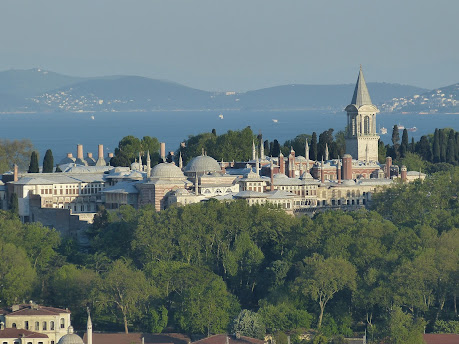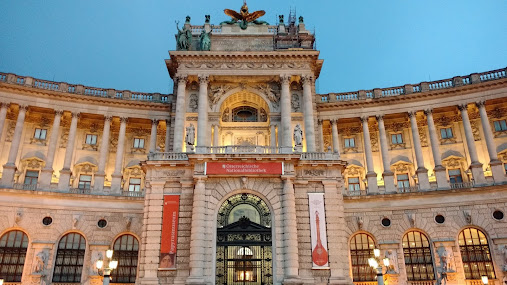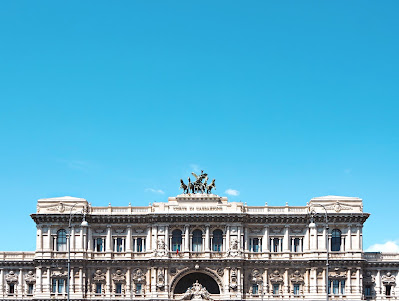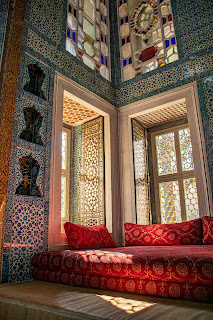Upon conquering Constantinople, Mehmed II ordered the building of a monastery on the site of the fourth-century theater of Emperor Theodosius I. With the completion of the palace at Beyazit, work began on a new palace in the seraglio area. The New Imperial Palace is known today as the Topkapi Palace. It is located at the top of a hill at the end of the historic peninsula where the waters of Marmara, Bosphorus, and the Golden Horn meet. The Topkapi Palace was restored in the 1950s by the management of the Topkapi Palace Museum and is open to visitors.
 |
Topkapi Palace |
The Palace Structure :
The first court is entered through the Imperial Gate on the fortress, across from the Church of Hagia Sophia. The entrance of the 2nd court is through the middle gate, or the salutation or Bab-ul-salam that was built by Mehmed II. The gate was renovated by Murad II in the late 16th century and no longer has its original gilded doors or portico.
The third court houses the palace of school for pages, the sultan's headquarters, and his treasury. it is entered through the gate of Felicity.
Small passages between the Hall of Treasury and the Department of the Pantry lead into the Fourth court, a loose collection of Kiosks built on three levels.
Architectural Characteristics :
1. Imperial Gate :
The massiveness of this stone gate emphasizes its defensive character. Its central arch leads to a high-doomed. Guilded Ottoman Calligraphy adorns the structure at the top, with verses from the Holy Quran and Tughras of the Sultans.
2.First Courtyard :
The exterior of glazed bricks shows a Central Asian influence, especially from the Bibi-Khanum Mosque in Samarkand. The square, the axial plan represents the four corners of the world and symbolizes, in architectural terms, the universal authority of the Sultan. As there is no Byzantine influence, the building is ascribed to an unknown Persian architect. The stone framed brick and the polygonal pillars of the facade are typical of Persia.
3.Gate of Salutation :
This gate has two large octagonal pointed towers. The date of construction of this gate is not clear, since the architecture of towers in Byzantine influence rather than Ottoman. The gate is richly decorated on both sides and in the upper part with religious and monograms of Sultans.
4.Second Courtyard :
Numerous artifacts from the Roman and Byzantine periods have been found on the palace site during recent excavations. These include sarcophagi, baptismal fonts, parapet slabs, and pillars and capitals.
5. Harem:
The harem wing was only added at the end of the 16th century. Many of the rooms and features in the Harem were designed by Sinan. The harem was decorated again under the sultans Mahmud I and Osman III in Italian inspired Ottoman Baroque style. These decorations contrast with those of the Ottoman classical age.
6. Imperial Hall :
The imperial Hall is also known as the Imperial Sofa, Throne Room within or Hall of Diversions is a domed hall in the Harem, believed to have been built in the late 16th century , It has the largest coming in the palace. After the great Harem fire of 1666, the hall was renovated in the rococo style during the reign of Sultan Osman III.
7. Fountains of Sultan Ahmed III :
The great square fountains are Rocco building in front of the palace gate that was built under Sultan Ahmed III in 1728. It was a social centre and gathering place. Each of the four facades contains a drinking fountain, flanked by niches and decorated in low relief with floral design.







Nicely written. Keep up the good work. 👍🏻
ReplyDeleteKeep up the goo
ReplyDelete